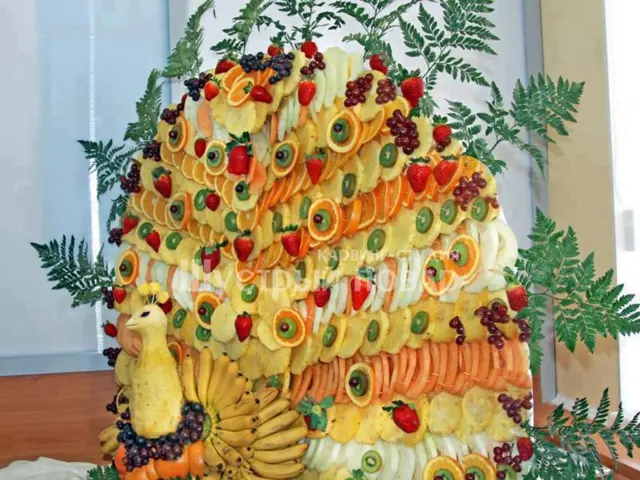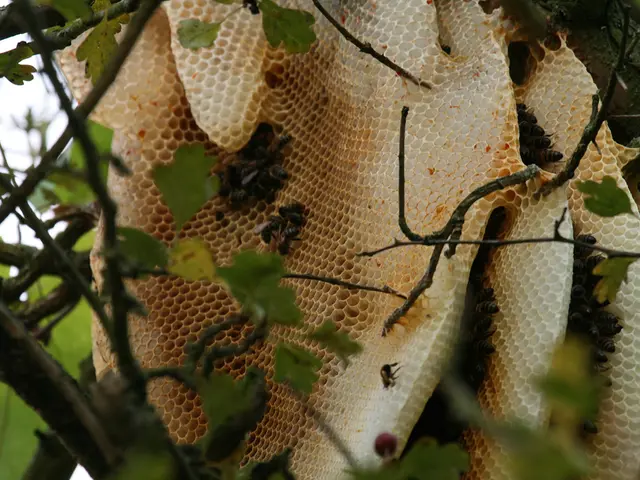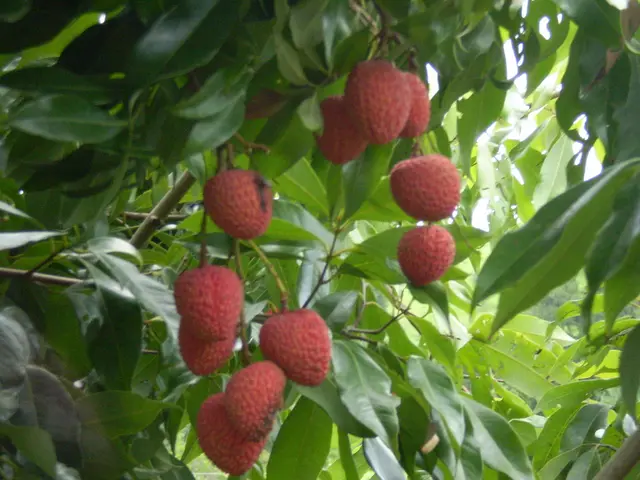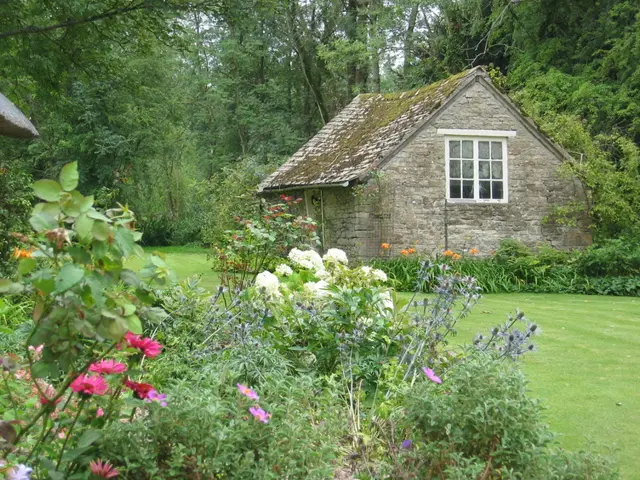Formula for Soil mixture in DIY Raised Garden Beds
Raised bed planting success boils down to the magic soil mix you choose. This blend determines if your plants bloom with vigor or languish in distress. A splendid raised bed soil concoction is a harmonious fusion of topsoil, compost, and organic matter.
Topsoil, the luscious layer found in nature, serves as the base structure. It's the glue that holds everything together. Fully decomposed organic matter, also known as compost, is where the hidden garden magic happens. It retains moisture and offers plants crucial nutrients. Lastly, organic matter such as leaf mold, grass clippings, or well-rotted horse manure improves soil structure, providing minute pockets to store water and air for thriving root systems.
There's no shortage of raised bed soil recipes – but they all employ a touch of topsoil, a dollop of compost, and a smidgen of organic matter. For instance, Joe Lamp'l, a well-respected gardening expert, proposes a luscious combo of 50% topsoil, 30% compost, and 20% organic matter. Mel Bartholomew takes things a step further, suggesting a zesty blend of 1/3 peat moss, 1/3 vermiculite, and 1/3 compost, with a generous sprinkling of organic material.
| Essential Elements | Approximate Ratio || ------------------ | ----------------- || Topsoil | 50% || Compost | 30-50% || Organic matter | 10-25% |
Diving Deep into the Soil
Topsoil
It's essential to scrutinize topsoil for your raised bed, be it from your own garden or bought. Grab a little sample and do a bit of detective work, separating the diverse components. This inspection helps see if your topsoil meets the grade or if it needs a few tweaks.
If you're buying topsoil, opt for a reliable supplier and ask for soil test results. Some vendors cleverly mix compost into their topsoil, which makes for a superb raised bed growing medium.
Filling your raised bed with care is as essential as the soil itself. Bear in mind the depth of your raised bed, the type of plants you'll grow, and their root depth. Most roots require between 6-12 inches of soil. Act like a feng shui master, filling the bottom half (for tall beds) with less costly organic matter such as logs, prunings, or leaves, and top it with your topsoil and compost blend.
For those who enjoy experimenting with ratios, a common mix is 50% topsoil and 50% compost. Adjust your blend to suit your specific requirements.
Remember, the quality of your topsoil sets the stage for a successful raised bed garden. Keep in mind that investing time to select the perfect topsoil and curating the right blend will reap rich rewards in the long run – healthy, thriving plants and the pride of knowing you've nailed it.
Unraveling Plants' Cation Absorption: The Soil's secret
You might also like...
Compost
If you don't have your own compost heap or your supply isn't quite enough, fear not! Your local garden center will be bursting with choices. Opt for a peat-free compost to be kinder to the environment.
Adding 20% organic matter to your raised bed soil will make the earth less dense and easier to work with. It will also enhance soil structure, creating tiny pockets to store water and air, stimulating root growth and promoting plant health.
Number of ingredients
Consider a broad range of organic mediums, including leaf mold, grass clippings, well-rotted horse manure, or composted wood and bark chips.
Brewin' up a perfect mix: coffee and soil
You might also like...
2
Sand
Sand is a rock star in raised bed planting soil for its exceptional drainage abilities. When blended with clay or loamy soil, sand helps prevent clumps from forming, allowing water to flow freely. This is especially beneficial for plants susceptible to waterlogged conditions as it prevents water from pooling around their roots.
Elevating Soil Structure: Sand's Secret
In addition to improving drainage, sand sculpts the soil structure. By creating gaps between the particles, sand prevents soil compaction, making it easier for plant roots to wiggle their way into the soil and access essential nutrients. This enhanced soil architecture also creates a prosperous environment for beneficial microorganisms, earthworms, and other soil life, vital for nutrient cycling and overall soil health.
Building a Soil Paradise: The Wonders of Sand
Soil compaction can rear its ugly head due to heavy foot traffic or machinery, making it difficult for plant roots to penetrate and access nutrients. Adding sand helps alleviate this issue by developing tiny openings between the soil particles, minimizing the chance of compression. This benefit is particularly valuable in high-traffic zones or soil prone to compaction.
First ingredient
Tips for Using Sand: A Guide for Sand-tastic Soil
Incorporating sand into your raised bed planting soil is a breeze. A good rule of thumb is to employ a ratio of 1 part sand to 2-3 parts soil and/or compost. This ensures proper drainage without radically altering the soil's texture. It's also essential to utilize the appropriate type of sand for your specific application. Fine sand works great for in-ground gardens, while coarse or builder's sand, with its larger particles, is great for above-ground gardens and planting beds.
Unearthing the Hidden Magic: The Secrets Within Decaying Plants
Topsoil
You might also like...
Clay
When crafting a raised bed, it's vital to employ a combination of topsoil and compost, with clay playing a significant role in the topsoil. An ideal raised bed soil blend incorporates approximately 50% topsoil and 50% compost, with the topsoil including a generous helping of clay. This admixture provides the necessary structure and nutrients for plants to flourish.
It's worth noting that while clay is advantageous for raised bed planting soil, it should not be the only ingredient. Mixing clay with other materials such as sand, silt, and organic matter will create a well-rounded soil that supports healthy plant growth.
A Raised Bed Gardener's Guide to Separating Soil and Rocks
You might also like...
Second ingredient
Silt
If you're planning on planting in silt, worry not! To prevent erosion, select a level and dry spot in your garden and fashion small terraces along any slopes. Cover crops like buckwheat and berseem clover can also be employed to prevent erosion, as they serve as a physical barrier and root themselves deep in the soil.
To ameliorate silt, incorporate plenty of organic material such as fallen leaves, yard trimmings, compost, or mushroom compost. This will help to achieve good soil tilth with proper aeration, water filtration, and nutrition.
Compost
The State of the Soil: Making the Most of Varied Plant Habitats
You might also like...
Frequently Asked Questions
... some relevant FAQs could be included here, addressing common questions about raised bed planting soil, such as:
- What is the best soil for raised beds?
- How often should I replenish the soil in my raised bed?
- Can I use garden soil in a raised bed?
- How deep should I fill my raised bed with soil?
- What happens if my raised bed soil is too compacted?
- What is the best time to plant in a raised bed?
- Can I grow vegetables in a raised bed?
- How do I make my own raised bed soil?
- What tools do I need for planting in a raised bed?
- Can I add fertilizer to my raised bed soil?
- How do I maintain my raised bed soil over time?
- What are some common raised bed planting mistakes to avoid?
- What is the ideal pH for raised bed soil?
- How do I test my soil for pH levels?
- What is the best way to water a raised bed garden?
- How do I choose the right plants for my raised bed?
- Can I mix different types of soil for my raised bed?
- What plants grow well in a raised bed?
- How do I make my raised bed more eco-friendly?
- What is the best way to prevent pests and diseases in my raised bed garden?
- How can I create a self-watering raised bed system?
- What are some unique raised bed designs to try out?
- How can I extend the growing season in a raised bed?
- What is Square Foot Gardening and should I try it?
- Can I build my own raised bed or purchase one?
- What are the benefits of raised bed planting?
Enrichment Data End
- Vegetable gardening success is significantly influenced by the soil health in raised bed planting as the choice of soil mixture determines if the plants bloom with vigor or languish in distress.
- For home-and-garden enthusiasts looking to improve their lifestyle, essential elements for crafting a splendid raised bed soil concoction include topsoil, compost, and organic matter, all of which serve unique purposes that contribute to thriving plants.







